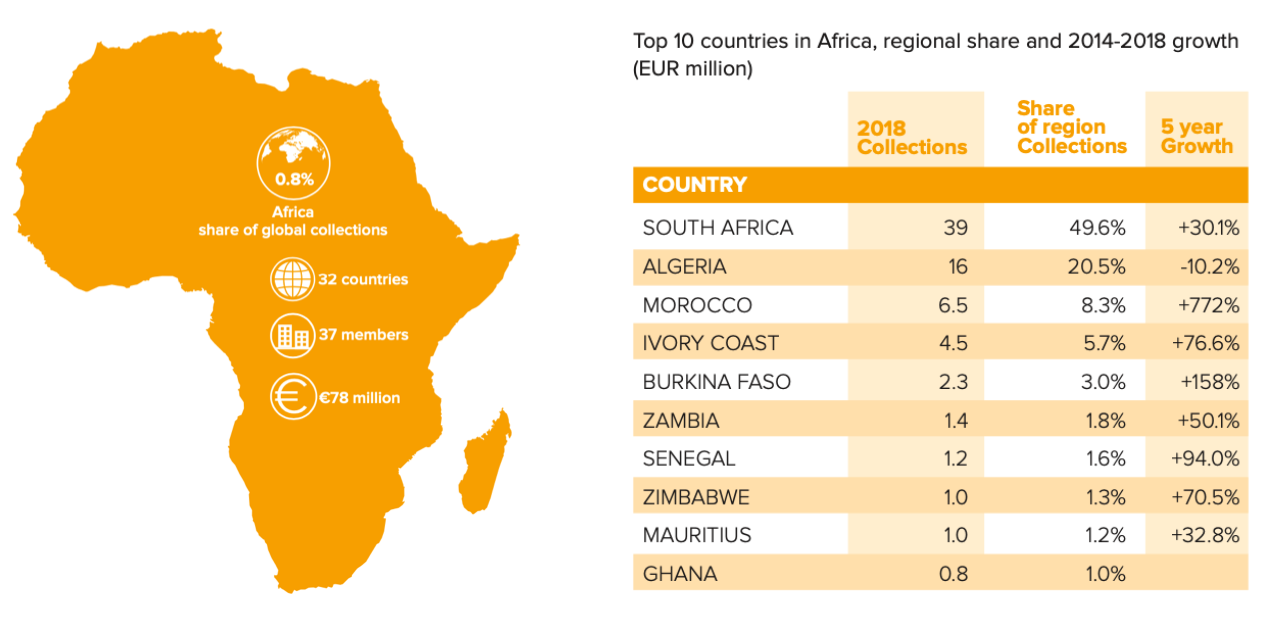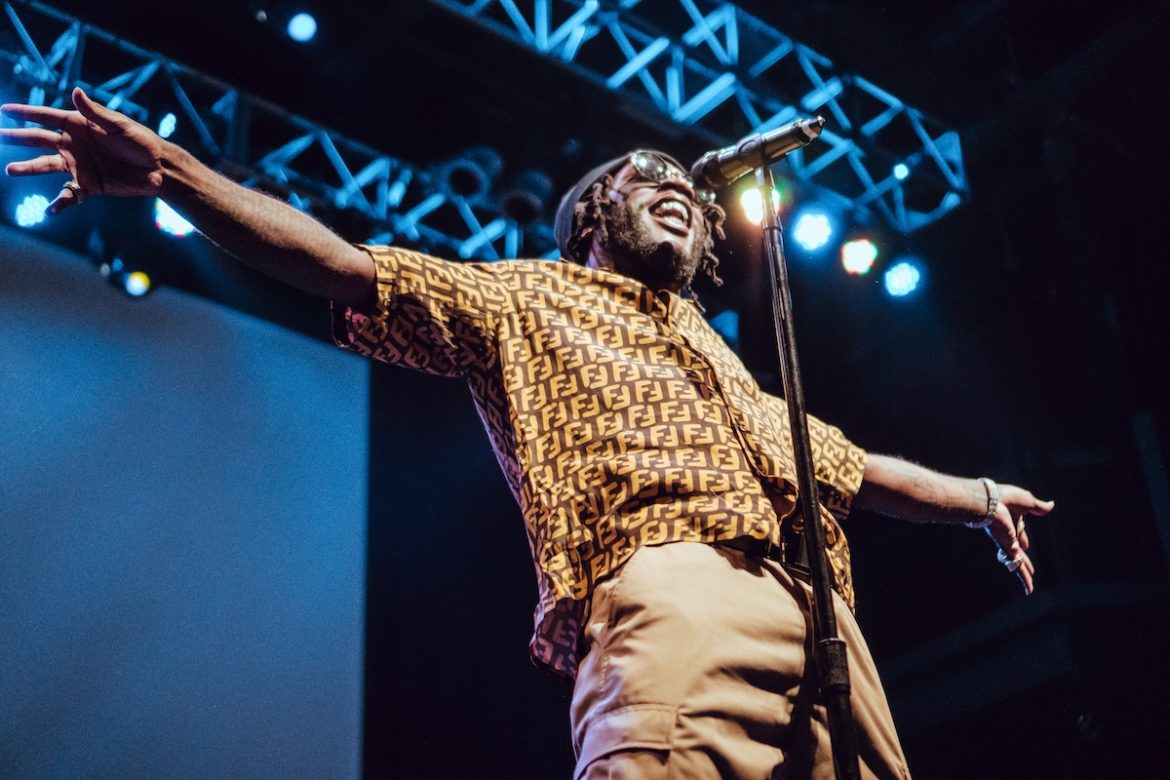Unquestionably one of the most vibrant and dynamic musical landscapes on Earth, the domestic business often lacks the infrastructure and acumen to match. In the first of a two-part investigation, Ben Gilbert examines the continent’s readiness to go overground.
Geographically, David Byrne has travelled a long way from Dumbarton, the town of his 1952 birth. Via these formative years in Scotland to the jerking angularity and scuzzy floors of mid-70s CBGBs and onto the more expansive Talking Heads productions and fully global mindset of Luaka Bop, he has taken music with him. Now 68, Byrne continues to innovate around this cultural form and is clearly as adept proselytising about the virtues of sounds from Africa as he is Manhattan’s East Village.
Released this month, his most recent playlist, David Byrne Radio Presents: The World’s Inspiration – Africa, celebrates a scene where Wizkid and Drake collaborate, “Keleketla! works with a whole raft of DJs, and the Sault project with Michael Kiwanuka turns a mixtape into a true dramatic work of art.” His enduring passion for the continent, showcased here and in the back catalogue of the aforementioned record label he founded in 1988, underscores the complexity of this 30.37m km² land mass.
In recent years a new wave of talent across the continent and the diaspora has helped to bring African music to the world stage. The global explosion of the Afrobeats genre in particular has seen international superstars joining forces with some of Africa’s most exciting artists. “We see Africa as a hotbed for musical creativity,” said Jean-Elie Ilunga, Partner Manager, MEA, at PRS for Music, whose members include iconic artists such as Burna Boy, Wizkid, and Mr. Eazi, as well as next generation stars like Rema, Joeboy and Teni. “We encourage artists to collaborate across markets. In recent years, we have witnessed collaborations between Major Lazer and Mr. Eazi, Wizkid and Beyoncé, Ed Sheeran and Fuse ODG, while Burna Boy enlisted the likes of Chris Martin on his new album,” Ilunga told Synchtank.
“In recent years, we have witnessed collaborations between Major Lazer and Mr. Eazi, Wizkid and Beyoncé, Ed Sheeran and Fuse ODG, while Burna Boy enlisted the likes of Chris Martin on his new album.”
– Jean-Elie Ilunga, PRS for Music
There is little doubt that, musically speaking, this is one of the most vibrant and dynamic landscapes on Earth. What’s often missing, business-wise, is the infrastructure and acumen to match.
Europe brings in 50% of worldwide music collections. Africa delivers 0.8%
In their latest report, CISAC (The International Confederation of Societies of Authors and Composers), summarised the ongoing challenges in this part of the world, highlighting the difficulties such a dichotomy presents when seeking to harvest the creative possibilities and deliver a more powerful domestic industry with genuine international heft. The global collecting-societies body found that, for example, while Europe brings in more than half of music collections worldwide, Africa’s contribution was 0.8%, in comparison to Asia-Pacific (15.7%) and Latin America (5.4%).

Source: CISAC Global Collections Report 2019
Even so, it’s clear that the needle is being pushed in the right direction across the continent, with significant year-on-year percentage growths seen in a number of African countries, such as Burkina Faso, Cape Verde, Djibouti, Malawi, Rwanda and Seychelles. In the report, CISAC, which represents 239 collective management organisations in 122 countries and five regions, commented: “Africa has weathered political, legislative, judicial and other challenges over the last five years, and collections have grown by 29.1%.”
Speaking specifically about the area in an interview with Music Ally, CISAC’s director general, Gadi Oron, expressed frustration at the inadequate business processes and frequent mismanagement that exists in many corners of the continent. It is estimated, for example, that almost half of the region’s radio stations are unlicensed and other broadcasters, including some that are state-owned, are not paying royalties.
“There’s no reason why the next big hit should not come from Angola”
“Africa is not a region where there is a one-size-fits-all solution, but there is huge potential. Those countries are so culturally rich, and the music industry in many of them is so vibrant. There’s no reason why the next big hit should not come from a country like Angola. It’s just a case of a lot of work to be done there to help the local industry,” he commented.
As many individual figures and global businesses now realise, the potential here is perhaps unlimited and certainly uncharted. According to IFPI’s recently released Global Music Report, recorded music industry revenues for Africa and the Middle East grew by 15.9% to $101m in 2019. Consequently, the organisation that represents the recorded music industry worldwide opened a sub-Saharan Africa Regional Office in Nairobi.
“The sub-Saharan Africa recording industry is very promising,” Angela Ndambuki, Regional Director, commented after her appointment, adding: “The market is developing albeit at a slow pace and varying levels from country to country. The industry holds a big opportunity for growth, especially with online users, seeing that it holds a population of more than one billion – a potential market to tap into.”
Universal targeting hip-hop, Afrobeats and trap artists across the continent
The major labels are poised to act, expanding their footprints in Africa and completing a range of investments in business, talent and new headquarters. In May, Universal Music Group (UMG) confirmed the creation of Def Jam Africa, less than a year after the launch of Def Jam South East Asia. Based in Johannesburg, South Africa and Lagos, Nigeria, the label is expected to target artists working in hip-hop, Afrobeats and trap from across the continent.
Sipho Dlamini, MD, Universal Music Sub-Saharan Africa & South Africa, stated: “Together, we will build a new community of artists, that will push the boundaries of hip-hop from Africa, to reach new audiences globally.” Elsewhere, Sony Music Entertainment Africa (SMEA) agreed a joint venture with entertainment and brand agency Celebrity Services Africa (CSA) in June. CSA Executive Director Davin Phillips said the collaboration was focused on “reworking the entertainment market-place for Africa, connecting artists across the continent and unlocking the ambitions of the creative industry”.
In April, Warner Music Group confirmed news of an investment in Africori, a distribution, rights management and artist development company, which gives them access to a roster of 6,500 African artists and 700 labels. Meanwhile, in publishing, Wyclef Jean has raised $25m in capital funding for his creative enterprise Carnival World Music Group, while Sony/ATV Music Publishing South Africa and Content Connect Africa (CCA) entered into a new strategic partnership and Downtown Music Holdings bought Sheer Music Publishing, the continent’s largest independent music publisher.
The gradual emergence of a new superpower in global music
Encompassing 54 separate countries, Africa is mind-boggling in size. But, even so, there is abundant evidence of the gradual, creeping emergence of a new superpower in global music. Yoel Kenan, founder and CEO of Africori, agrees. “In my view, it’s a combination of a few points. The first is that there’s more and more interest in African music internationally. The potential of African music to be exported is bigger today than it’s ever been, so the labels are interested in having a presence there. That is based on facts and consumption of African music outside of Africa.
“There’s more and more interest in African music internationally. The potential of African music to be exported is bigger today than it’s ever been.”
– Yoel Kenan, Africori
“In terms of the African market itself, I think that people are starting to think, okay, we’ve done our investment in China, we looked at India, Latin American was first of course, we’ve got some investments in the Philippines and Indonesia developing quite nicely, we looked at Russia a few years ago. What is the last frontier? I think that they’re looking at Africa and saying that’s the last frontier. We need to make sure we’ve got some positions on the market.
“I also believe that when you see your competition starting to move in a market, if you were already thinking about it, it gives you an extra push to act on it. I think that we’re going to see more people doing it. Some people made the move first and that just brings more confidence. Investors are there – they tend to follow as well. Not many people tend to take the first risk. I like the question why now? Why not in a year or two? Why not two years ago? And it’s kind of like that zeitgeist that Africa is having at the moment. I think the time is great now,” Kenan told Synchtank.
Domestic investment boosts Africa’s creative and cultural projects
With a specific focus on West Africa, particularly Nigeria, Barry van Zyl has an equally insightful take on events across the domestic music industry. He was Johnny Clegg’s drummer for 20 years and is keen to celebrate not only his activism at a societal level but also the more recent progress made around business infrastructure. He cites 2019’s N22b Creative Industries and Financing Initiative (CIFI), launched by the Central Bank of Nigeria (CBN), which was followed by African Export-Import Bank’s $500m credit facility in January for creative and cultural projects.
“The value in Nigeria is walking on the ground, not under the earth/sea anymore.”
– Barry van Zyl
Van Zyl suggests this has helped to create an unprecedented interest in the local music scene: “The Nigerian government has realised that historic oil dependency is not sustainable, and that new forms of activity need to feed into the GDP. Areas like tech innovation, agriculture, tourism and the creative industries are obvious choices,” he explained, continuing “the value in Nigeria is walking on the ground, not under the earth/sea anymore.”
An MBA graduate from Henley Business School, van Zyl is currently charged with attempting to transpose a similar academic offering across the creative economy into West Africa. But, in the short-term, he suggests there are many quick fixes to cement greater sustainability in the continent’s cultural fields, telling Synchtank that “first world business models need reworking for this environment.”
“The way the world’s pop music sounds and is organised can be traced back to Africa”
Kenan agrees, suggesting improved confidence in industry collaborations, in tandem with increased education around core themes such as rights management and licensing, will allow wider sections of this landscape to exploit the technological advancements – across platforms, consumption and monetisation – following in their slipstream. But, he warned: “What I’ve learnt with Africa is that it’s not a sprint, it’s a marathon. You can’t go into Africa and think you’re going to achieve success very quickly.”
“What I’ve learnt with Africa is that it’s not a sprint, it’s a marathon. You can’t go into Africa and think you’re going to achieve success very quickly.”
– Yoel Kenan
However, Kenan continued: “The big difference that we have compared to China, for example, is that the music coming from Africa is really exportable and is being consumed outside of Africa. It’s music that can really travel.” This is a point reiterated by Byrne, in commentary that reflects persisting frustrations around the possibilities and limitations of this market, from the past and into the future.
“To a large extent, the way the world’s pop music sounds and is organised can be traced back to Africa. The colonials did incredible harm and damage, but in the process their minds and bodies were colonised,” he explains. With a range of homegrown streaming services – Spinlet, Boomplay, Mdundo, Anghami – and global brands – Spotify, Apple Music, Deezer, YouTube Music – jostling for position, the digital connections to take this industry overground are now freshly hardwired. The question remains: Is it time to flick the switch?
This is the first of a two-part investigation into the African music industry. Click here for part 2.
Header photo credit: Ruben Gzirian
